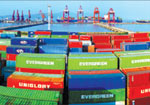Model city
Updated: 2011-05-13 12:02
By Qian Yanfeng (China Daily European Weekly)
Eco project being built with Swedish help
What will the city of the future be like? For the authorities in Wuxi, Jiangsu province, it will definitely be green - with the answer found right in their city.
Under an ambitious plan by the local government, a green town set to be a State pilot project will be built within three years.
On July 3, 2010, the Wuxi government signed an agreement with the Swedish department for the environment to build a Sino-Swedish Low-Carbon Eco-City, touted as the first of its kind in eastern China.
After an introduction by the Swedish Consul General in Shanghai in late 2009, Tengbom, one of Sweden's leading architecture firms, won a commission to design 2.4 sq km out of a total 150 sq km for Taihu New City in Wuxi as "a flagship and exemplary eco-city". The site, named "The Wuxi Sino-Swedish Eco-City", will have a strong Chinese-Swedish theme.
A working group has been set up to identify collaborative projects and companies between the Wuxi and Swedish governments, especially clean-tech solutions within the new project.
Situated north of Taihu Lake next to a wide swath of wetlands, the 2.4-sq-km eco-city in Wuxi is modeled after Stockholm's Hammarby Sjostad, which is built on former industrial brownfield land located on the south side of Hammarby Lake. The project is expected to provide a green lifestyle for the town's estimated 20,000 residents.
The project also forms part of the 150-sq-km Taihu New City, which is a national low-carbon eco-city demonstration zone, designed with a strong emphasis on ecology and environmental sustainability.
According to You Zhibin, deputy director of the Wuxi planning bureau, authorities have divided the masterplan for the eco-city into seven distinct categories covering sustainable use of energy, sustainable waste management and water supply, green building design and sustainable traffic and transport.
"It's an integrated system of sustainability that goes beyond the construction of sustainable facilities. People's awareness on sustainability, for instance, is also an important part of an eco city," You says.
Local residents will be encouraged to use public transportation and that will make up at least 80 percent of the total commuting in the area, he says. More than 50 percent of public transportation will utilize renewable energies.
To help people "slow down" in this eco city, walking and bicycle lanes will outnumber car lanes, and the number of roads will be in accordance with the area's geographical features such as dense water lanes and low hills.
E-paper

War of the roses
European Chinese rose growers are beating their Chinese rivals at their own game
Preview of the coming issue
High-tech park gets big boost
At the source
Specials

New wave
Coastal city banks on marine sector to ride next stage of economic development

Drunk driving
Drunk drivers face a detention for one to six months and a revokation of their drivers' license.

V-Day parade
A military parade marking the 66th anniversary of the Soviet victory over Nazi.
